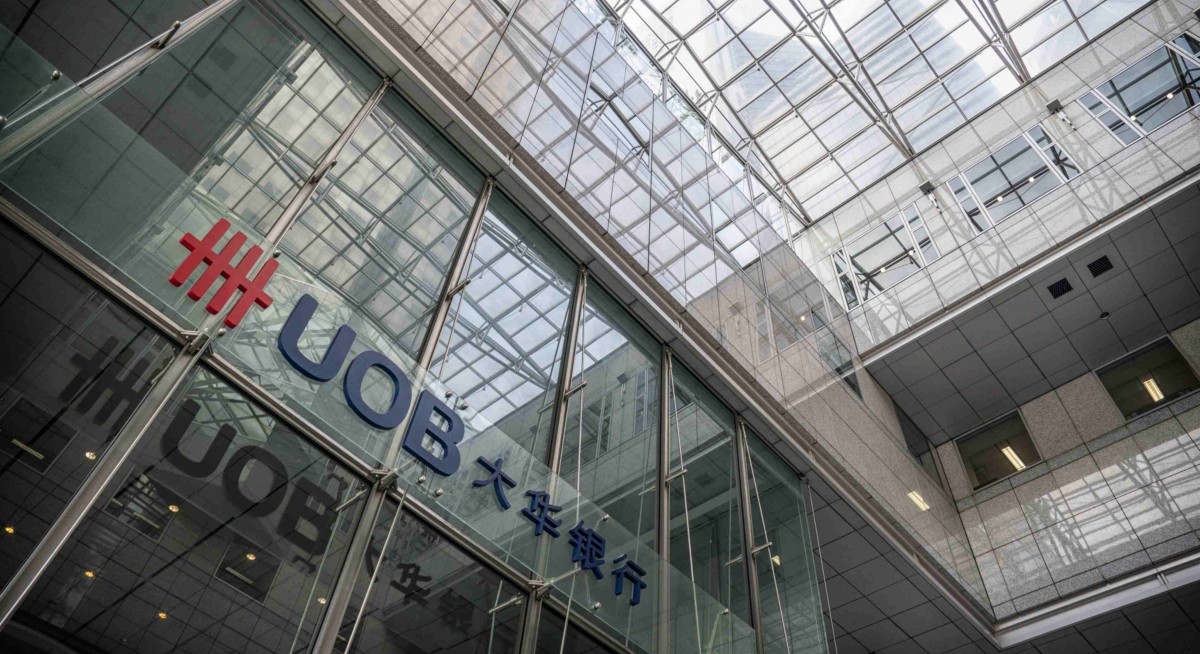“We believe United Overseas Bank will be able to ride through the current challenges given its solid asset quality and healthy capital. We revised FY2022-2023 earnings by 10%/4% mainly on robust NIM expansion,” say RHB analysts in an Oct 31 note.
Net profit of $1,403 million, up 26% q-o-q and 34% y-o-y in 3QFY2022 lifted 9MFY2022 earnings to $3,421 million, up 12% y-o-y.
The “robust” 3QFY2022 result was driven by NIM expansion, up 28 bps (basis points) q-o-q, strong 73% q-o-q rebound in trading and investment income, and the 24% q-o-q drop in impairment charges, write RHB analysts.
UOB has received Malaysia and Thai regulators’ approval for the acquisition of Citi’s retail assets, and will welcome customers from Nov 1. Around 90% of Citi’s staff in these two countries have agreed to stay.
The consolidation of the Citi portfolio, which has a larger portion of unsecured loans, would lift NIM by another 5 bps to 10 bps while adding 5 bps to credit cost, says RHB Group Research.
Meanwhile, OCBC Investment Research analysts are maintaining “buy” on UOB with a target price of $33.
OCBC analysts point to an improvement in non-performing loans (NPL). NPL ratio of 1.5% in 3QFY2022 is lower than 1.7% in 2QFY2022). 3QFY2022 credit cost of 17 bps was better than 2QFY2022’s 22 bps and 1QFY2022’s 19 bps, due to lower specific allowances.
See also: UOB’s 3Q2022 at a new high, Citi acquisition cost to impact 4Q2022
UOB’s common equity tier-1 (CET1) ratio remained “healthy” at 12.8%, slightly lower from previous quarter following 1HFY2022 dividend payout but remains in the bank’s target range of 12.5%-13.5%, notes OCBC analysts.
CGS-CIMB Research analysts Andrea Choong and Lim Siew Khee are maintaining “add” on UOB with an unchanged target price of $35.60.
“The beat was driven by a significant rise in net interest income (NII), up 20% q-o-q and up 39% y-o-y, as NIMs rose 28 bps q-o-q to 1.95% in 3QFY2022 and stronger-than-expected trading and investment income,” write Choong and Lim. “We believe stronger sensitivity to Fed rate hikes likely drove the expansion in NII, which was 1 bp above our forecast.”
In another report on the same day, the analysts indicated that they have lowered their target price to $34.80 amid their optimistic outlook for the bank.
"While management guides for NIMs being likely to peak in 1QFY2023-2QFY2023, we highlight that this translates into NIM expansion being likely to moderate over the next two quarters. Assuming a terminal Fed rate of 2.5%-3%, management guides that NIMs will likely be able to sustain above 2% - a level last seen in FY2010," they write.
To this end, Choong and Lim have upped their earnings per share (EPS) estimate for FY2022 by 12% as they factor in quicker NIM expansion and higher trading and investment income on the back of increased hedging activity.
"Using current interest rate assumptions, management projects [its] return on equity (ROE) to reach 13% in FY2023 and rise towards 14% in FY2024," the analysts write. "Our Gordon growth model (GGM)-based target price is lowered to $34.80 as we roll over to FY2023 and factor in a higher 2.5% risk-free rate."
For more stories about where money flows, click here for Capital Section
The bank's asset quality deterioration as interest rates rise is a downside risk, they add.
Declining fee income
Maybank Research analyst Thilan Wickramasinghe says asset quality and credit costs need to be watched.
“We believe risks to asset quality are on the downside going forward. Continued rate increases could adversely affect business operating conditions, while prolonged lockdowns in North Asia could continue to pressure supply chains. Potential recessions in key markets could further exacerbate these risks,” he writes.
In an Oct 30 note, Wickramasinghe is staying “buy” on UOB with a higher target price of $33.77, up from $32.28 previously.
“While wealth management driven fees have been weak year-to-date given volatile market conditions, we believe Singapore’s safe haven status and the integration of the Citi acquisition should support growth going forward. Overall, higher margins, gearing towards structural Asean growth and a strong balance sheet offers strong earnings and operational visibility for UOB through these uncertain times,” writes Wickramasinghe.
Finally, PhillipCapital Research analyst Glenn Thum is maintaining “buy” on UOB with the highest target price among research houses mentioned here, unchanged at $35.70.
Thum points to fee income, which continues to decline. “Fees fell 10% y-o-y argely due to lower wealth and fund management fees. The decline of 8% q-o-q was mainly due to loan-related fees moderating from last quarter’s high, while wealth management fees remained soft amid subdued market sentiment.”
However, loan-related fees continued to show stable growth of 5% y-o-y, spurred by trade and investment growth, while credit card fees were higher 6% y-o-y as customer spending rebounded with borders reopening, he adds.
UOB’s current account savings account (CASA) ratio declined y-o-y, falling 6% y-o-y to 49.8% mainly due to the high interest rate environment and a move towards fixed deposits (FD), says Thum.
“Nonetheless, total customer deposits increased 6% y-o-y to $375 billion. Management has mentioned that they are concentrating on increasing FD campaigns and that the increase in FDs was higher than the drop in CASA,” he adds.
As at 12.13pm, shares in UOB are trading $1.20 higher, or 4.44% up, at $28.26.




